Raspberries are expensive to buy but easy to grow in Australian temperate climate zones. If you plant autumn and summer varieties, you’ll have fruit from December to April. Autumn bearing raspberries are varieties like Heritage, Lloyd George, and Autumn Bliss. Summer bearing raspberries include Chilcotin, Neika, Nootka; Williamette bears lighter crops but from both first and second year canes.
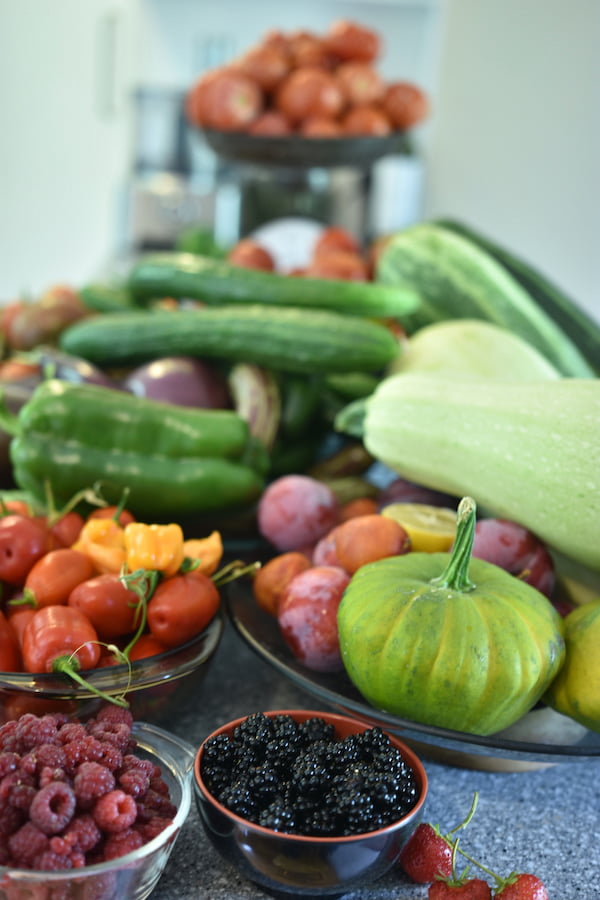
Raspberries are an essential part of the summer harvest
ALWAYS GROW AUTUMN AND SUMMER RASPBERRIES IN SEPARATE BEDS BECAUSE THEY ARE PRUNED DIFFERENTLY.
In my temperate Adelaide Hills climate, raspberries do best in dappled shade or morning sun. Hot afternoon sun and windy spots scorch foliage and shrivel fruit, so adapt your growing position depending on your climate (full sun for the coldest regions, more shade in the warmest ones). Hiking in the Italian Dolomites, I saw (and ate!) raspberries growing wild – in full sun but cool altitudes, as well as in heavy shade.
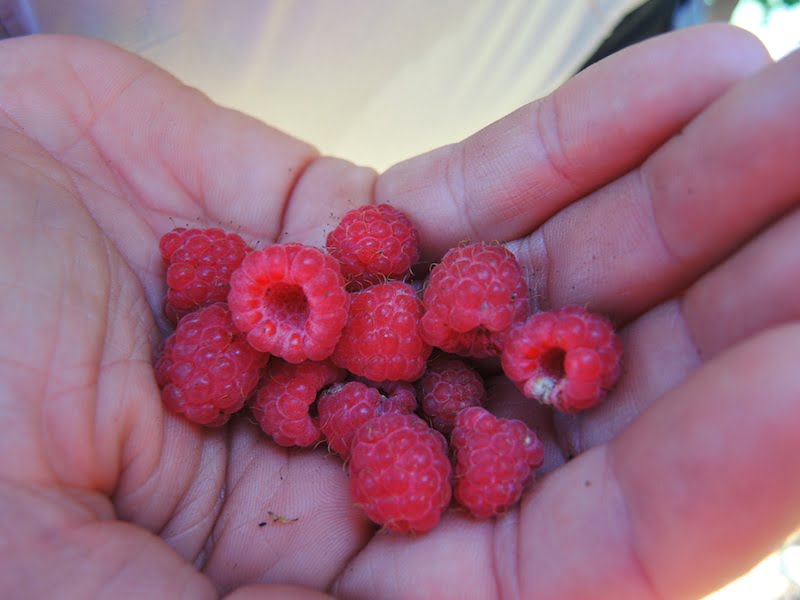
Wild raspberries we found in the Dolomites
My grandparents had success with summer raspberries in hot suburban Adelaide by planting them on the eastern side of the house. Drainage must be perfect: raised or terraced beds are ideal. Don’t grow them where tomatoes or potatoes have been.
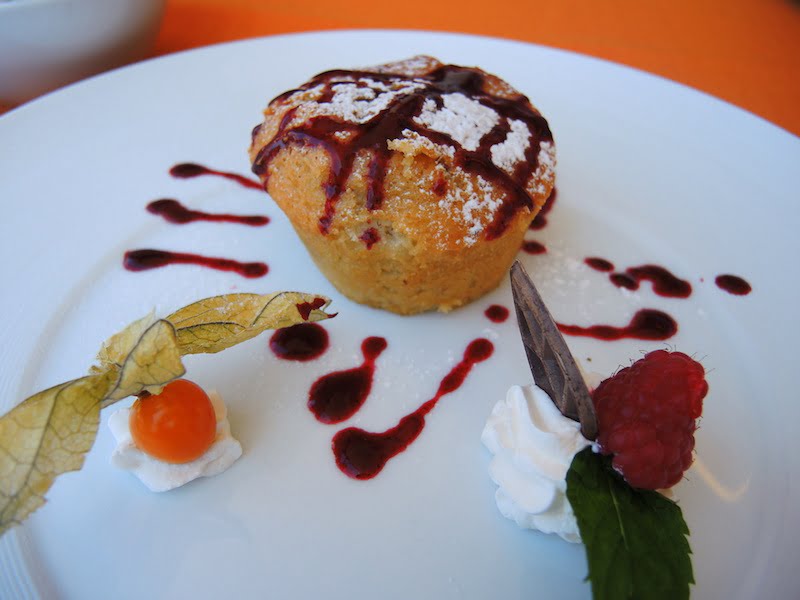
Delicious Italian raspberry dessert we had during our hike in the Dolomites
SOIL PREPARATION FOR GROWING RASPBERRIES
Make two beds 2-4 metres (6ft-12ft) long (or more) and 1200 (4ft) wide, with 2 metre (6ft) spacing between rows if possible. Mine are terraced, so spacing is less, but leave enough room to get between rows! North-south orientation is ideal but not essential in Australia with its plentiful light. Place autumn raspberries northernmost (sunnier side) because they’re not as tall as summer ones.
Dig a shallow trench and mix excavated soil with a barrowload per square metre (per 10 square feet) of well-rotted manure or compost. This creates slightly raised beds that drain well. To further improve drainage in heavy clay soils, incorporate 1-2 kg/sqm of gypsum as well as the compost. Vary depending on your soil – Zeolite in sandy soils, gypsum in clay ones. Raspberries prefer slightly acidic conditions so add sulphur regularly in alkaline areas or where irrigation water is alkaline. Epsom salts (magnesium sulphate) in late winter/early spring will also help.

In the foreground is the new planting of summer raspberries and behind are the established autumn raspberries
SUPPORTING RASPBERRY CANES
You can let autumn raspberries grow wild in a patch, but they will soon become overcrowded and shade themselves out of flower bud production, and it will become increasingly difficult to pick the berries. Therefore, give autumn raspberries parallel wire supports 50 – 60cm (20-24 inches) apart, at knee, hip and chest height, with ladder-like cross-bracing to hold canes. The wire doesn’t need to be excessively tensioned in short rows.
Summer raspberries are taller and need a single wire strung at 50, 100, 150 and 200cm (20, 40, 60 and 80 inches). There are other ways to trellis raspberries, but these are two of the simplest.

Summer raspberries late winter
PLANTING RASPBERRIES
Summer fruiting: about 60cm apart, autumn fruiting about 30cm apart. You can get away with fewer but your rows will just take longer to fill in. Water with Seasol (a seaweed-based plant tonic), mulch with pea or lucerne straw, or oak leaves. You’re not meant to cover canes with mulch but I’ve always just chucked mulch over the beds and have had no problem. If you can get cuttings of disease-free plants in early winter, these strike easily if inserted directly where they are to grow. Or replant thinnings.
PRUNING AND TRAINING RASPBERRIES
Autumn raspberries fruit on new season’s growth (primocanes), so cut to ground level in winter after leaf fall every year. In spring when canes are about 60cm, top them to encourage branching. Remove suckers that appear outside the wire supports – you want a strip of growing canes 40-50cm wide.
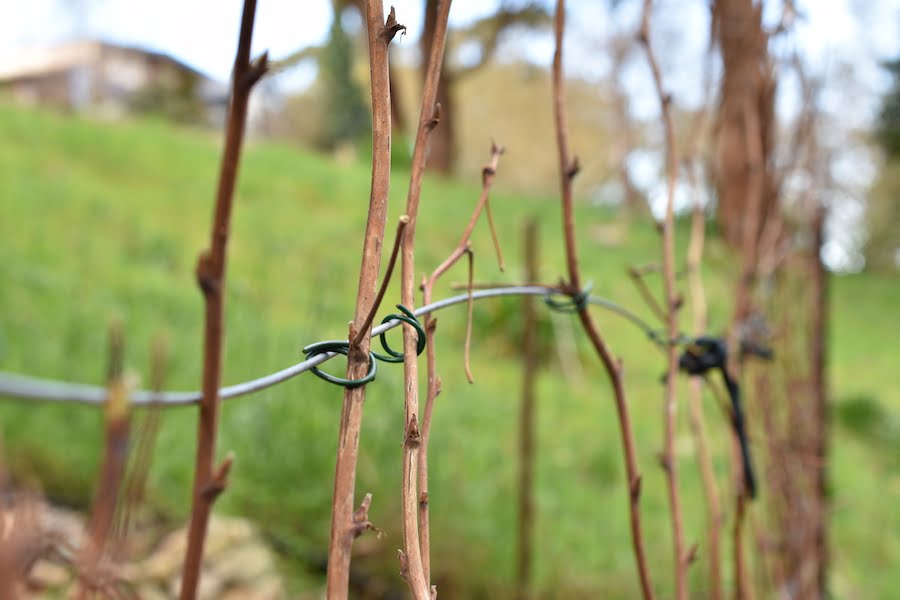
Summer raspberries tied up to their support wires
Summer raspberries fruit from second year canes, or floricanes. Canes die after fruiting and are removed (cut at ground level), but the new primocanes for the following season are already forming. Tie the new canes to the opposite side of the wire as they grow. You can also span parallel wires, and tie canes to the adjacent ones if you prefer. Tip canes when they are just above the top wire. When established, thin canes so they are spaced about 15 cm (6 inches) apart on the support wires, choosing the thickest, strongest canes. Cut, don’t pull, excess canes within the row to avoid damaging nearby roots. It’s okay to pull out straying suckers outside the row.
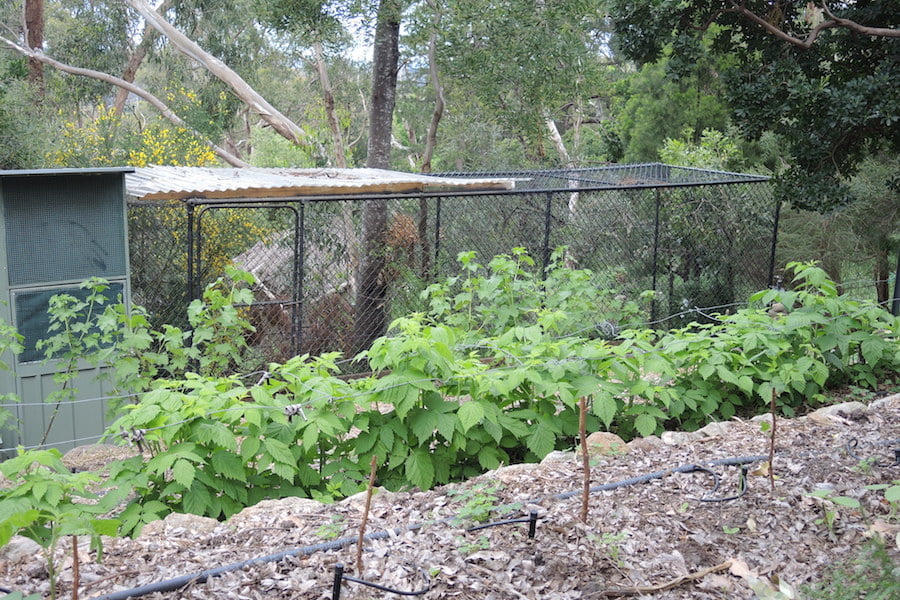
Training wire through the raspberry bed
FERTILISING RASPBERRIES
Feed raspberries generously with blood and bone, well-rotted manure, Gyganic* (an organic complete fertiliser) or Sudden Impact** in late winter–early summer. Water regularly and deeply throughout growing season using shrubblers*** on a timer so roots never dry out.

Raspberry dessert
NOTES
[*Gyganic – a pelleted organic fertiliser with N:P:K of 7.1 : 3.8 : 9.2, plus S, Fe, Mg, humic acid and trace elements]
[**Sudden Impact for Roses – N:P:K pf 9:4:12 – plus secondary nutrients and micronutrients in a natural form along with extra Fe and Mg]
[***Shrubblers are 360° low-emitting irrigation heads designed to water shrubs. More info HERE]
Plus more info on growing raspberries HERE
